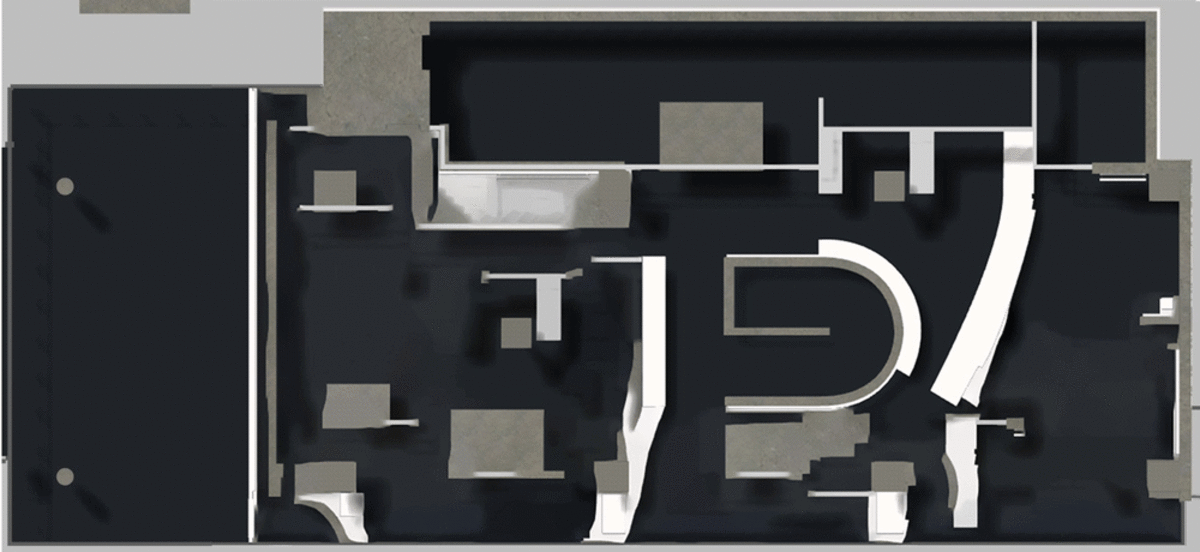“A Hole in the Wall”: A Conversation with Michael Hays and Michelle Chang

K. Michael Hays, Eliot Noyes Professor of Architectural Theory and Co-Director of the Master in Design Studies Program, and Michelle Chang, Assistant Professor of Architecture, discuss A Hole in the Wall, an installation of three eight-foot tall walls inside the Frances Loeb Library.
Art historian Heinrich Wölfflin once characterized painterly architecture as a collection of “broad, vague masses.” This installation adopts a similar attitude towards form. Three eight-foot tall curved walls divide the Frances Loeb Library into smaller rooms. To design the masses, the project employs inpainting, a technique common to art restoration and imaging.
In the field of art restoration, inpainting is used to fill in areas lost to damage. Conservators refer to a painting’s facture—how the artist has handled the paint—as primary source material for repair rather than to socio-historical contexts. This distances a restorer from subjective interpretation and protects a work’s authenticity. For example, restorers systematically covered gaps in Cimabue’s Crucifix with colored lines matching the palette of its remaining surface. The hatching at once reveals an accurate historical account (that the work was repaired) and removes visual distractions that an absence would otherwise draw attention to. In computer graphics, inpainting is a similar process of insertion. However, digital inpanting, in addition to recovering lost information, creates new content. Imaging algorithms seamlessly fill holes by sampling a picture’s visual patterns. Popular applications patch poor scans and erase blemishes in portraits.
A Hole in the Wall adopts both analog and digital inpainting because the former privileges accuracy and the latter embraces artifice. Moving between modes preserves formal qualities of the existing condition and allows the viewer to imagine what could exist in its place. Whether in the fiction of a flawless face or in this case, a more intimate reading room, the tension between authenticity and artifice is essential to filling in holes.
Anyone requiring accessibility accommodations should contact the Public Programs Office at (617) 496-2414 or [email protected].
#GSDEVENTS